A Look at Lilacia Park-The Plum Estate
/The Plum Estate
Read More
Players Green, photograph, c.1940s.
This stunning vista of Lilacia Park is the open meadow flanked by crab apples and tulips stretching west from the pond. This lawn is known as the Players Green on the Jensen blueprints and is best seen from Players Hill. Players Hill was built as an open area overlooking the pond, but in later years, the deck was installed for safety concerns.

First Lilac Festival Booklet, c. 1930.
People can gather on the lawn to watch the Lilac Court and see the Lilac Queen be chosen every May. The festivals in the 1930s were pageants with a large cast of actors following a script written for the occasion. Many Lombard women were recruited to sew costumes for the players while other Lombardians built props for the performances.
The current way of presenting the court and crowning the Lilac Queen started when the Lilac Festival resumed after World War 2.
Jens Jensen understood the connection between performing arts and nature and the need for entertainment spaces in crowded urban areas. When this area was part of the Plum estate, it was planted with rows of lilacs so that Colonel William Plum could study their growth, chart his garden, and cultivate young plants. When Jens Jensen began creating Lilacia Park, originally called The Community Garden, Plum’s lilacs and other plants were carefully rearranged to create the place we all enjoy every spring.
Written By: Jean Crocket Lombard Historical Society Archivist
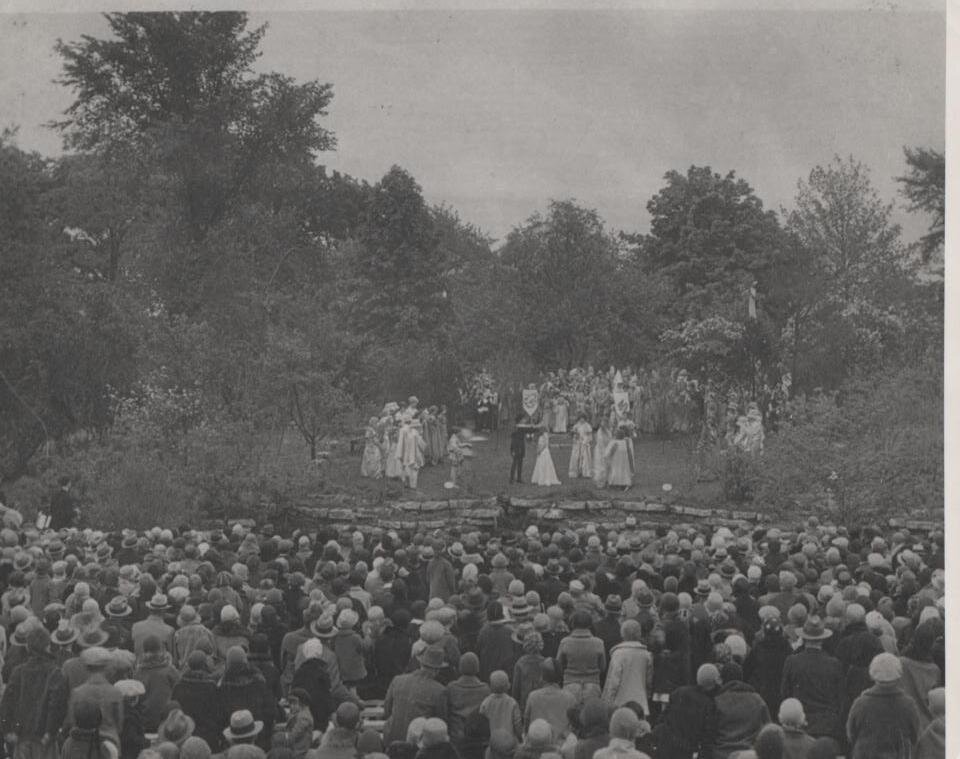
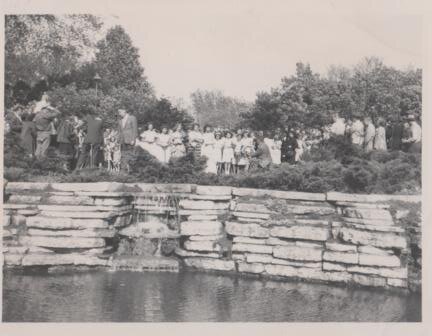
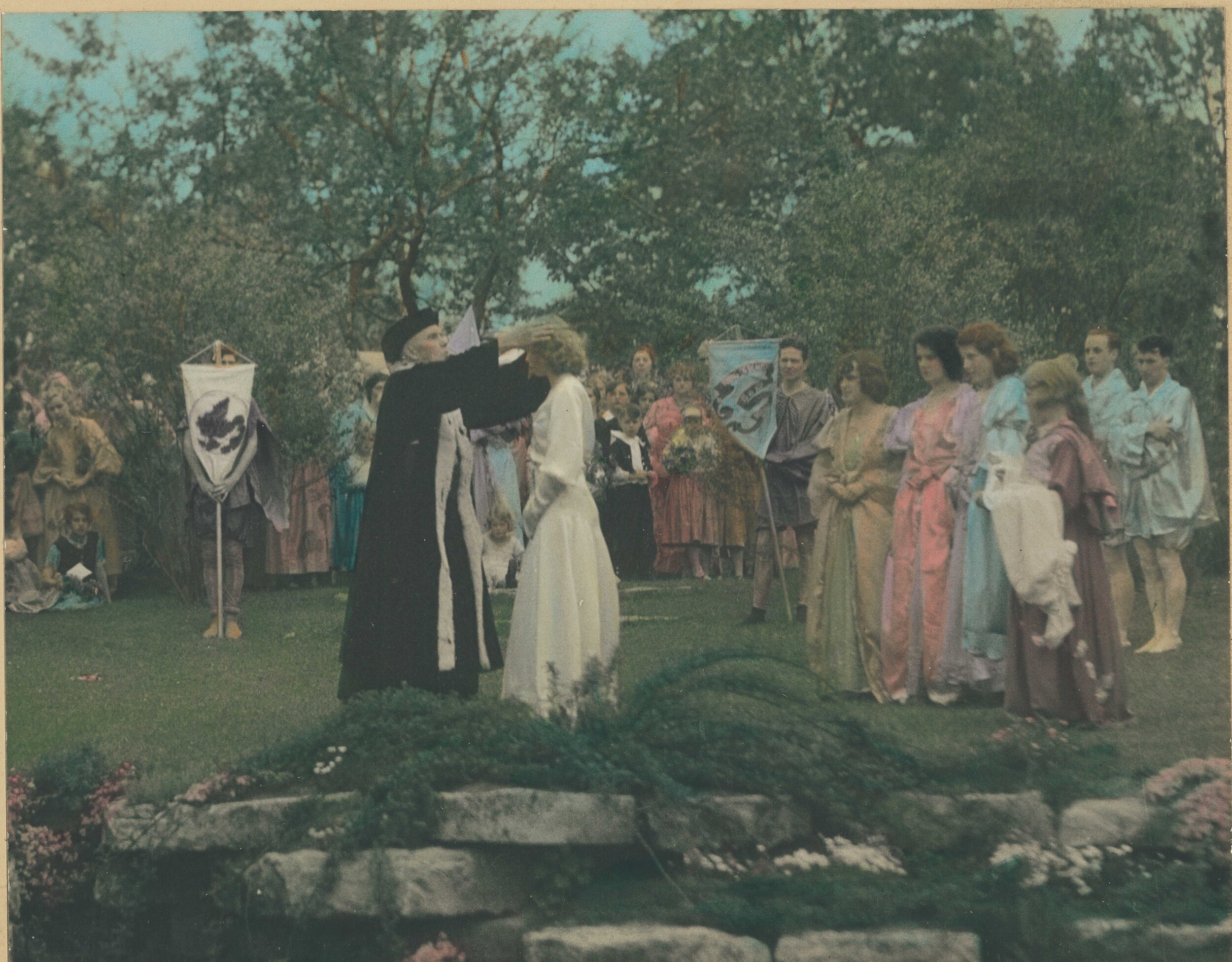
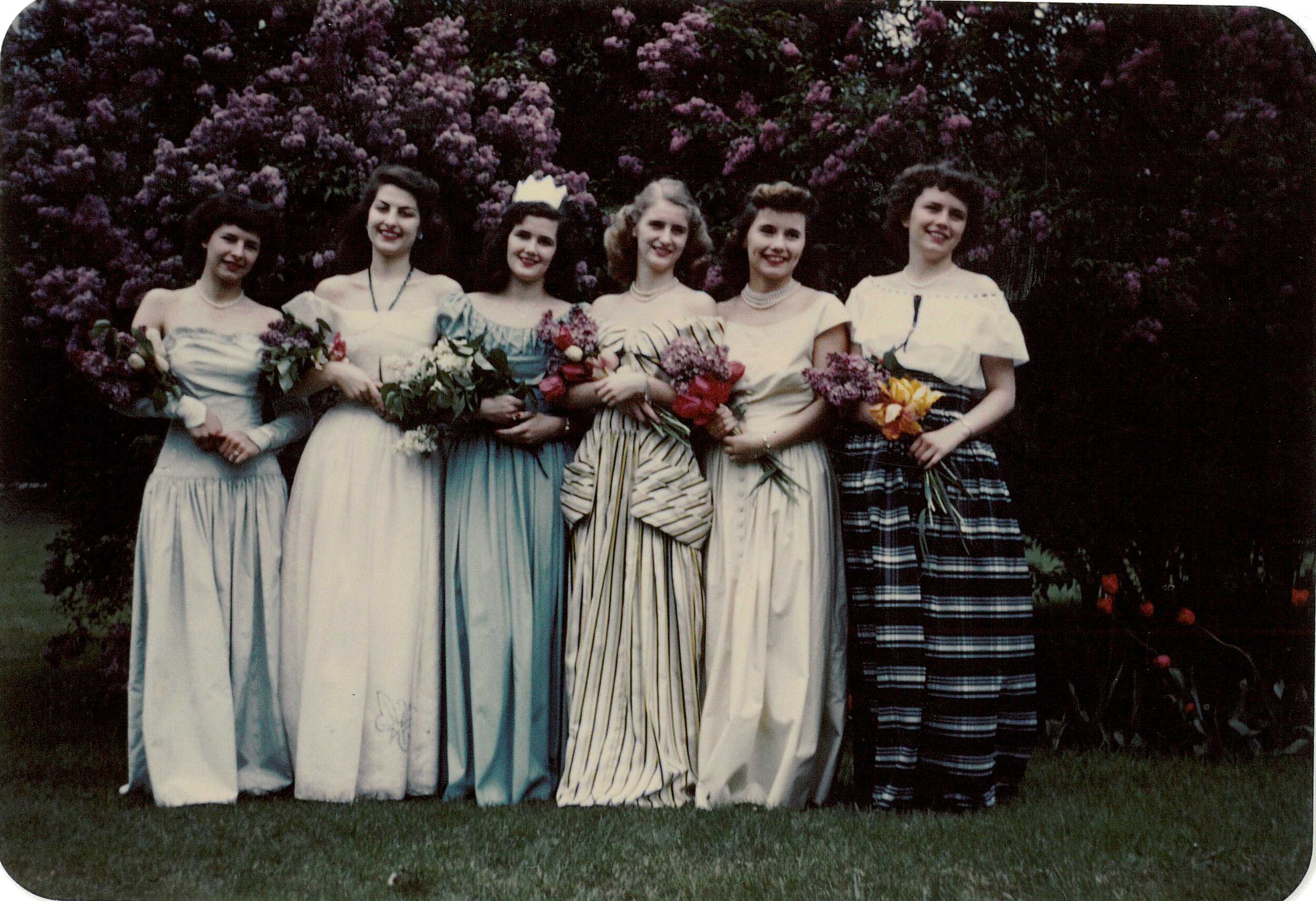
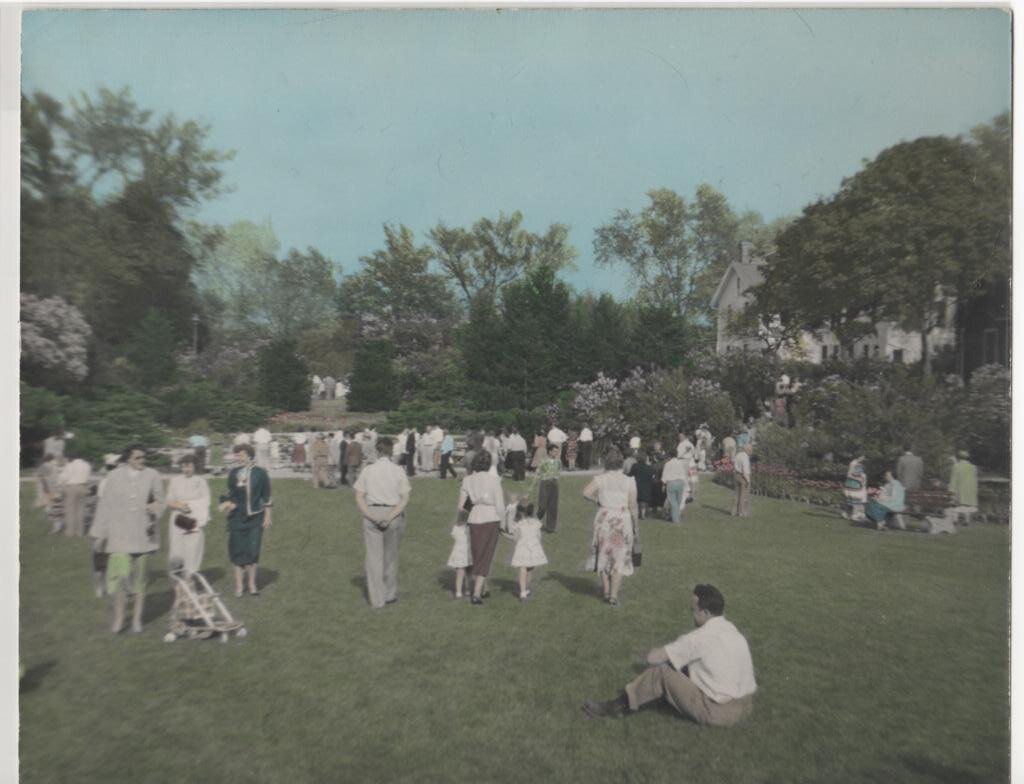
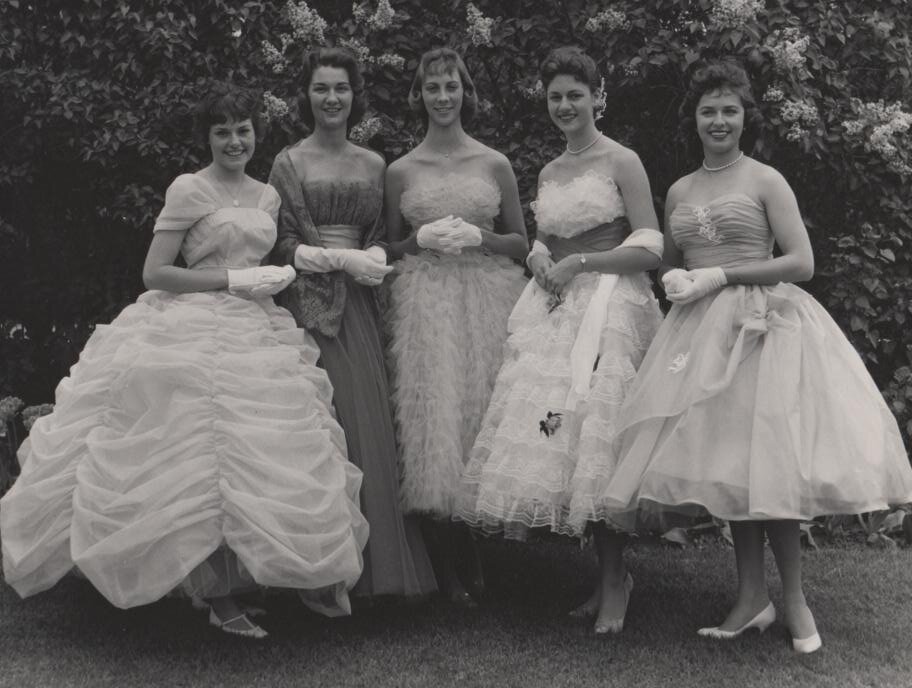
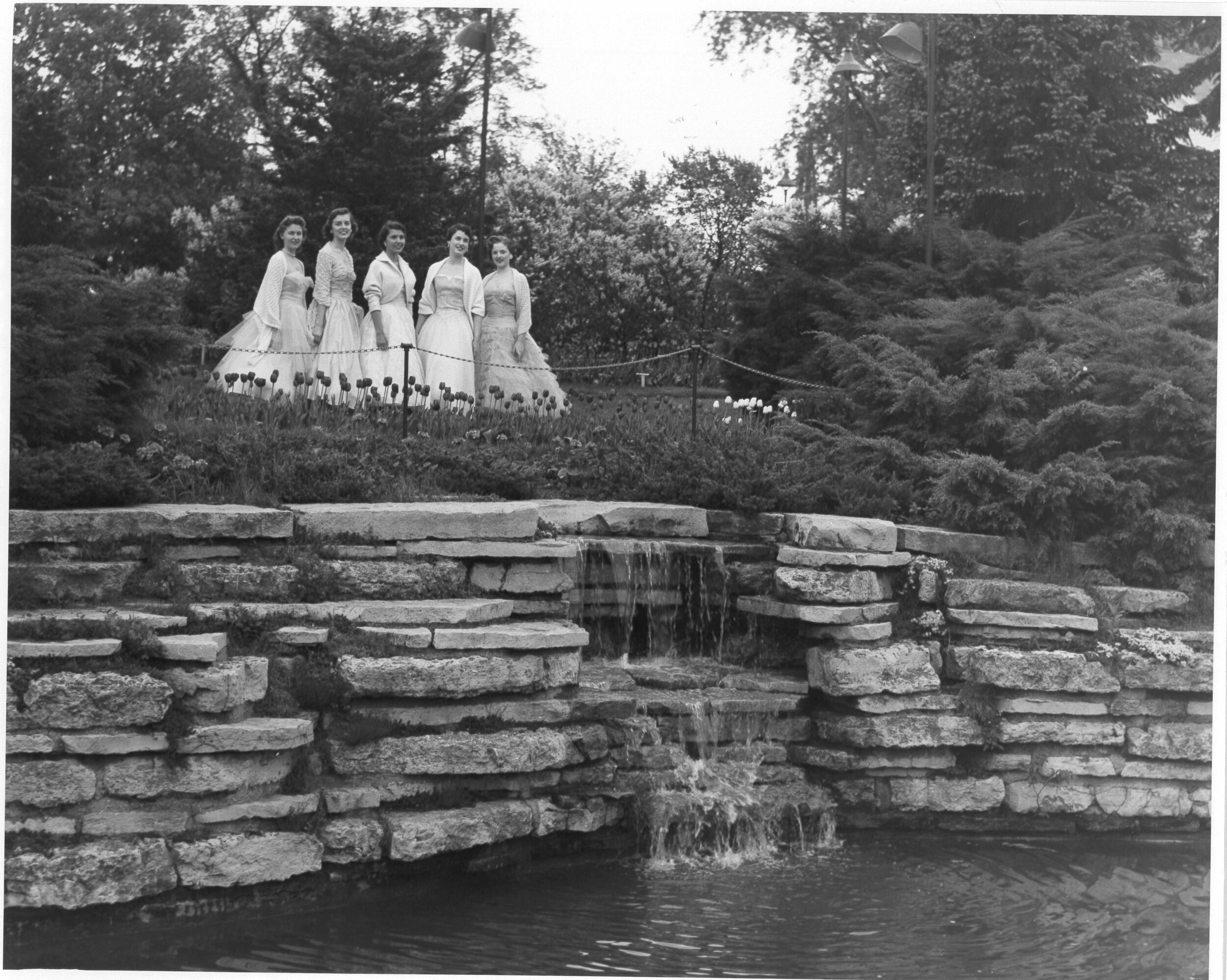
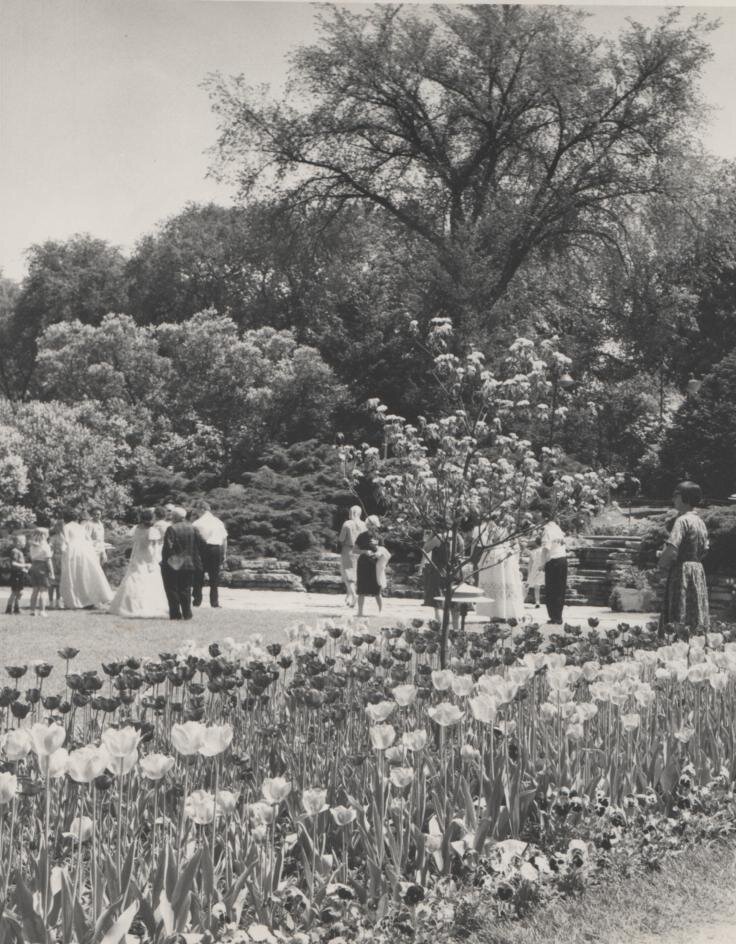
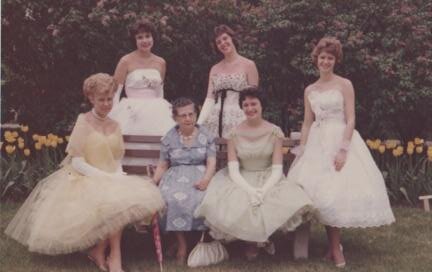
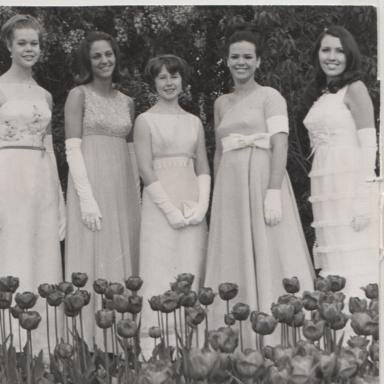
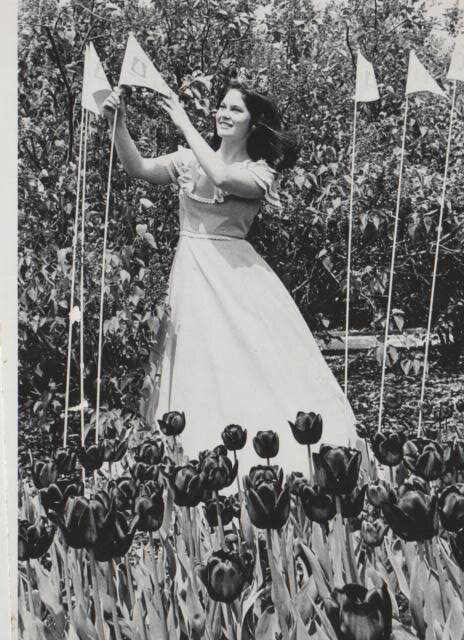
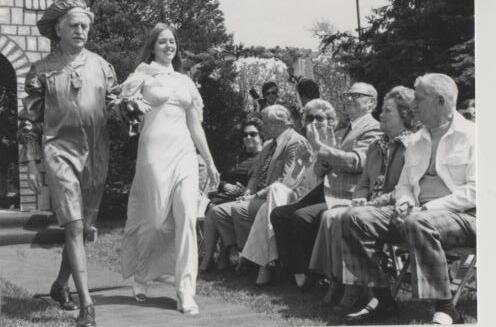
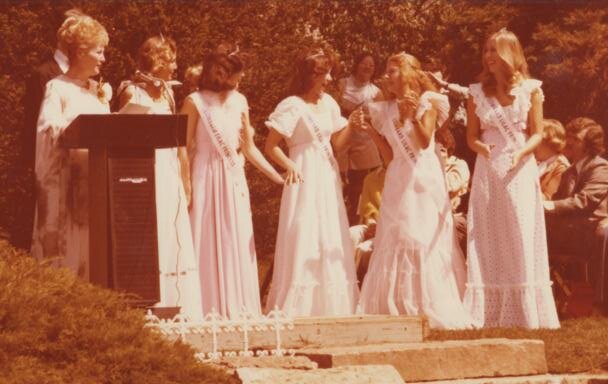
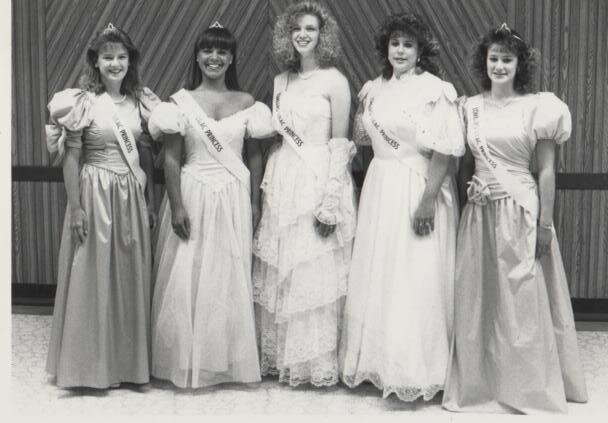
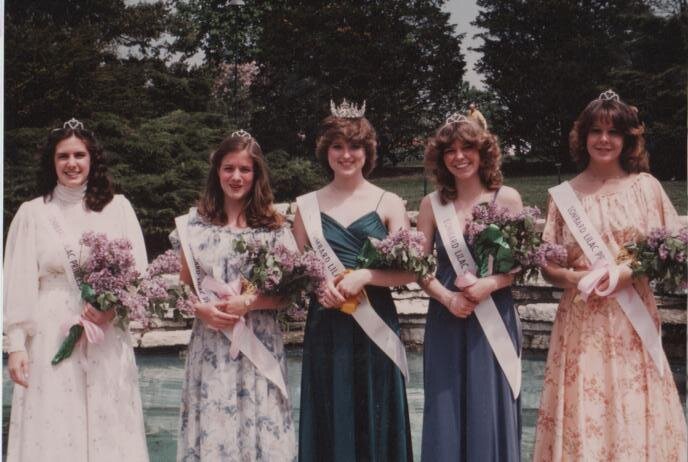
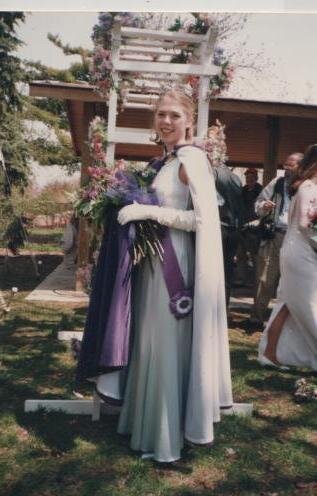

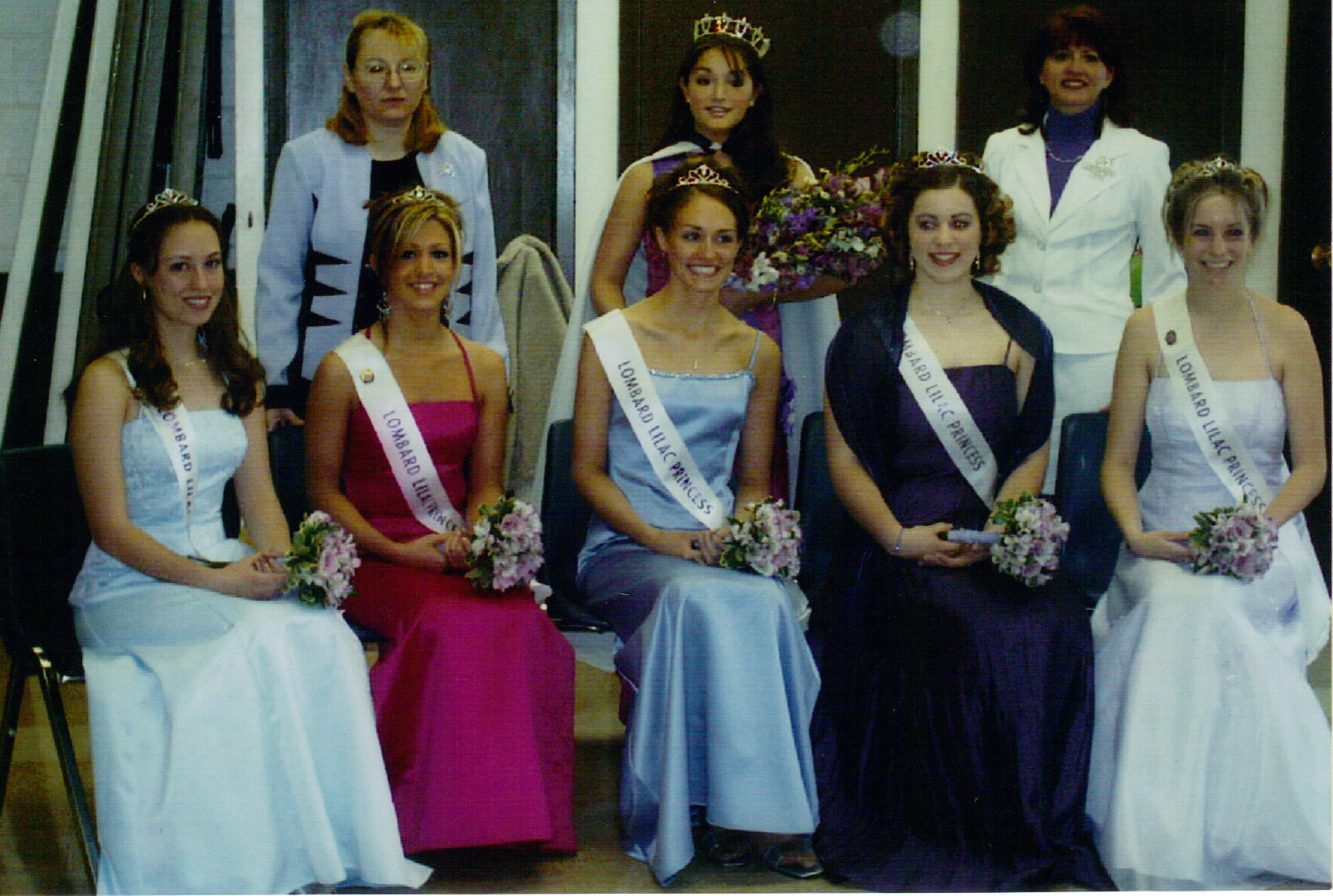
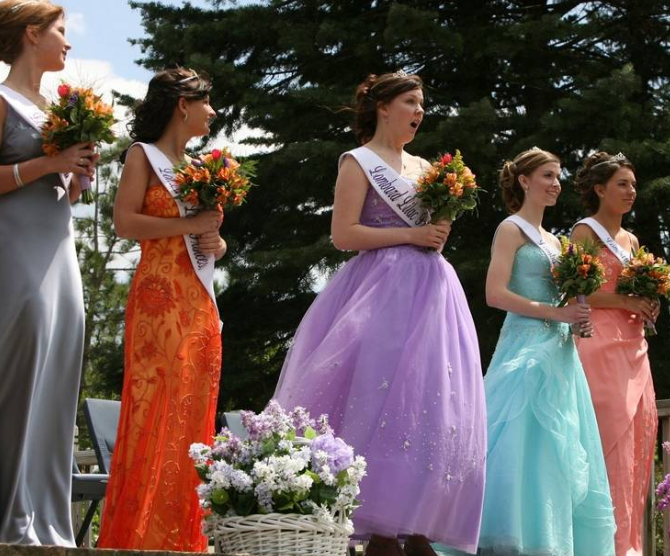
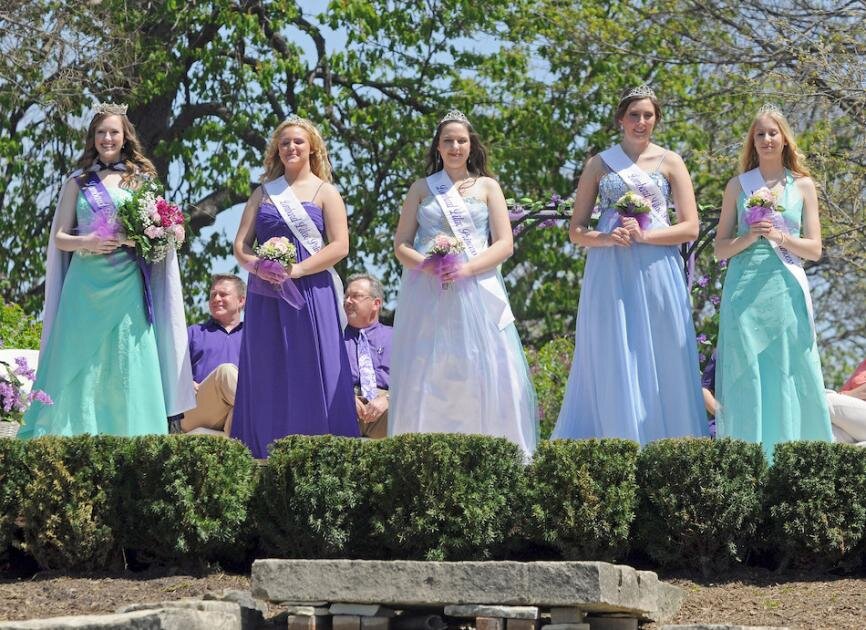

Photograph, c. 1940s.
One of the most beloved “residents” of Lilacia Park the Iron Deer, formerly known as Rastus*. This deer was cast in a Pennsylvania foundry in 1888 and brought to the A.H. Andrews estate on Main and Parkside to live near a fellow iron dog statue in their garden. When the Andrews home burned, the statues were removed. The dog disappeared but the buck was eventually moved to Lilacia Park. Visitors will notice this buck no longer sports his antlers due to vandalism years ago.

Curteich Postcards
The Deer started out his Lilacia Park residence near Plum's home on the east side of the park, and over the years he could be found in different locations. The Lombard Park District would move the deer in the fall to be stored in a garage.
Today, the Lombard Park District uses Lilacia Park as an all four-seasons park, and the Iron Deer stays to greet visitors year-round. His permanent home can now be found on the west side of the park in a raised flowerbed.
Because he is now in his senior years, it isn’t encouraged to “ride” him but as one of the long traditions of Lilac Time, people can still and should pose for pictures with the Iron Deer.
*Please note this term is a historic racially insensitive term. However, LHS is unaware of how the Iron Deer received this name.


Lilacia Park Bench, photograph, c.1940s
When wandering Lilacia Park, you may have sat on a low limestone wall to enjoy the view and the surrounding scents. Perhaps you looked at this funny curving wall, or as a kid, walked along the broad stone seat pretending to be a tightrope walker in a circus. What you discovered is a council ring, a signature element in gardens designed by Jens Jensen.
These rings, or sometimes half-circles, were scattered throughout the gardens he created so that visitors would enjoy the view or find a quiet place to chat with a friend.
The photograph to the left, and the video with Alison Costanzo, LHS Executive Director, shows one of the council rings at Lilacia Park, which is not really ring-like but instead is a curving structure. Jensen saw council rings as uniquely American, with no defined head of the table, but a place for people to meet as equals. When friends meet at the council ring, there is no hierarchy, and so ideas and stories can be shared equally.
Jensen also believed that since nature has no straight lines, a curving bench flows with the design as opposed to a traditional bench. In an undated letter to Stanley White, a professor of Landscape Architecture at University of Illinois, Jensen wrote:

Flagstone path at Lilacia Park,
photograph, c. 1940s
I think it would be well to say this much about the straight line, that it is cold and uncompromising. A curved line is poetic - it is romantic - it is mysterious and is a part of our life.
He goes on to explain the difference between a snakey line versus a curved line and ends by saying If a straight line is the fitting thing, use it, and I will not make a curve for the sake of making it.
The council ring then becomes part of the Midwestern landscape, a low slung element where the earth and sky meet. If you wander through Lilacia Park when the lilacs are in full bloom, the paths you travel are never truly straight but instead have slight curves. A council ring becomes a destination for the wanderer, a spot where a visitor can enjoy solitude or a couple of visitors can have a quiet conversation without being on view to other wanderers.
Jens Jensen was influenced by the prairies and driven by a philosophical belief that parks are a humanizing element in crowded urban areas. Lilacia Park is one of Jensen’s smallest designs and contains, to this day, many of Jensen’s signature elements.
Written By: Jean Crockett, Lombard Historical Society Archivist
Blue Prints, The Planting Plan for The Lombard Community Garden & Library (Lilacia Park), Jens Jensen,
c. 1929.

Entrance to Lilac Park
We have an opportunity to embrace a new Lilac Time tradition while still being mindful of protecting our family, friends, neighbors and the vulnerable in our midst. Instead of going to Lilacia Park with your family and friends as usual, bring your scrumptious snack, homemade or store delivered, to your favorite ‘easy chair’ and watch Sarah Richardt, former Executive Director of the Lombard Historical Society and former President of the Lombard Park District Board of Park Commissioners, while she takes you on a virtual tour of Lilacia Park.
This video was created in conjunction with Tim Frakes Productions.
Although she is already ensconced in her new home in Ohio, you will be able to accompany her through her beloved Lilacia Park. With a degree in Forestry, a position on the Park Board for several years, and over a decade of giving tours of the Park, there is no better tour guide for this adventure. As many of you know, Sarah brings a contagious enthusiasm with her regardless of the outing, and although you will not be at the park, you will have a fabulous time watching A Look at Lilacia Park, featuring Sarah Richardt.

Sarah Richardt, Executive Director, 2016-2020.
As Lombard celebrates the 90th anniversary of Lilac Time, become the generation that creates an unforgettable merging of the old traditions with the new. Light a lilac scented candle, wear lavender, put those purple Mardi Gras beads to good use, make your own parade (keeping safely distant from your fellow paraders), and, of course, watch A Look at Lilacia Park. We have a choice. We can be dragged kicking and screaming, or we can sashay into the future imagining ourselves frolicking in the beautiful Lilacia Park amid the heady scents and vivid hues of May, all from the safety of our own homes.
Were you, or the people who owned your home before you, among the hundreds of ‘new’ people to move to Lombard who received a lilac bush from the Village? Invite your neighbors and friends who are not lucky enough to have a lilac bush, to pop into your yard and snip a sprig to bring home. Maybe they will leave a note on the bush, or the front door, so that, when it is safe to take a peek, you could read the messages.
Feel free to post pictures of your new Lilac Time traditions on our Facebook page.
Located in the old Lombard Hotel, above Babcock’s Grove Restaurant, Tim Frakes produces documentary and image video for non-profit, faith-based, broadcast and corporate clients.
Lombard Historical Society collects, preserves, interprets and promotes the history of Lombard.
SEARCH THE LHS WEBSITE:
UPCOMING EVENTS:
Hover over highlighted date and click the event to get details.

© Lombard Historical Society
The Lombard Historical Society office:
The Victorian Cottage and Office
23 W. Maple, Lombard, IL 60148
Sheldon Peck Homestead, 355 E. Parkside, Lombard, IL 60148
Contact Us